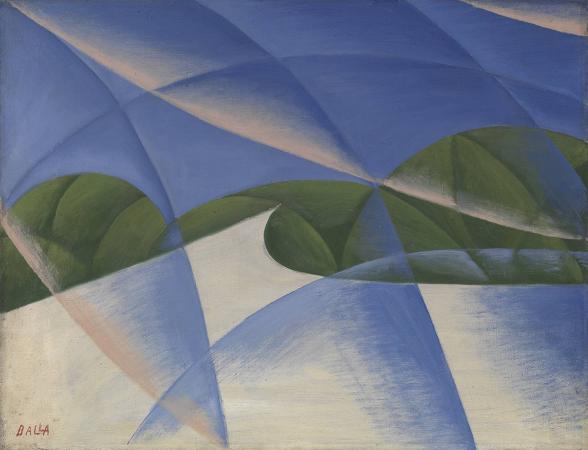
Giacomo Balla. Giacomo Balla was an Italian painter, art teacher and poet best known as a key proponent of Futurism.
In his paintings he depicted light, movement and speed. He was concerned with expressing movement in his works, but unlike other leading futurists he was not interested in machines or violence with his works tending towards the witty and whimsical.
Giacomo Balla was born in Turin, in the Piedmont region of Italy. He was the son of a photographer and as a child studied music.
At age nine, after the death of his father, he gave up music and began working in a lithograph print shop. By age 20, his interest in visual art had developed to such a level that he decided to study painting at local academies, and several of his early works were shown at exhibitions.
Following academic studies at the University of Turin, Balla moved to Rome in 1895, where he met and later married Elisa Marcucci. For several years he worked in Rome as an illustrator, caricaturist and portrait painter. In 1899, his work was exhibited at the Venice Biennale, and in the ensuing years his art was shown at major exhibitions in Rome and Venice, as well as in Munich, Berlin and Dusseldorf, at the Salon d'Automne in Paris, and at galleries in Rotterdam. Around 1902, he taught Divisionist techniques to Umberto Boccioni and Gino Severini. Influenced by Filippo Tommaso Marinetti, Giacomo Balla adopted the Futurism st
In his paintings he depicted light, movement and speed. He was concerned with expressing movement in his works, but unlike other leading futurists he was not interested in machines or violence with his works tending towards the witty and whimsical.
Giacomo Balla was born in Turin, in the Piedmont region of Italy. He was the son of a photographer and as a child studied music.
At age nine, after the death of his father, he gave up music and began working in a lithograph print shop. By age 20, his interest in visual art had developed to such a level that he decided to study painting at local academies, and several of his early works were shown at exhibitions.
Following academic studies at the University of Turin, Balla moved to Rome in 1895, where he met and later married Elisa Marcucci. For several years he worked in Rome as an illustrator, caricaturist and portrait painter. In 1899, his work was exhibited at the Venice Biennale, and in the ensuing years his art was shown at major exhibitions in Rome and Venice, as well as in Munich, Berlin and Dusseldorf, at the Salon d'Automne in Paris, and at galleries in Rotterdam. Around 1902, he taught Divisionist techniques to Umberto Boccioni and Gino Severini. Influenced by Filippo Tommaso Marinetti, Giacomo Balla adopted the Futurism st
Wikipedia ...